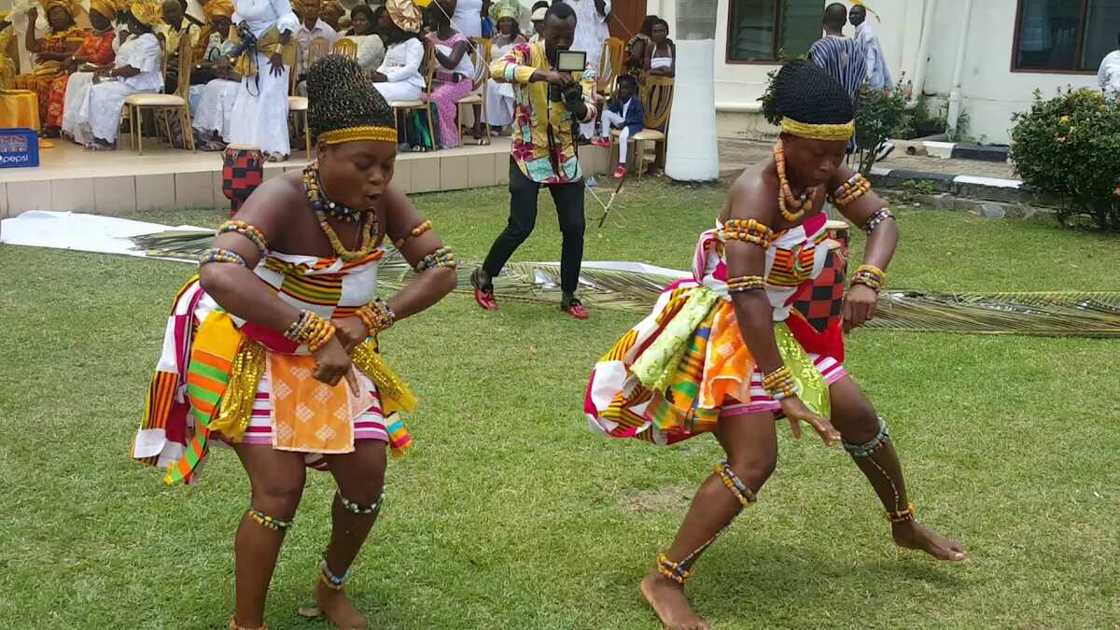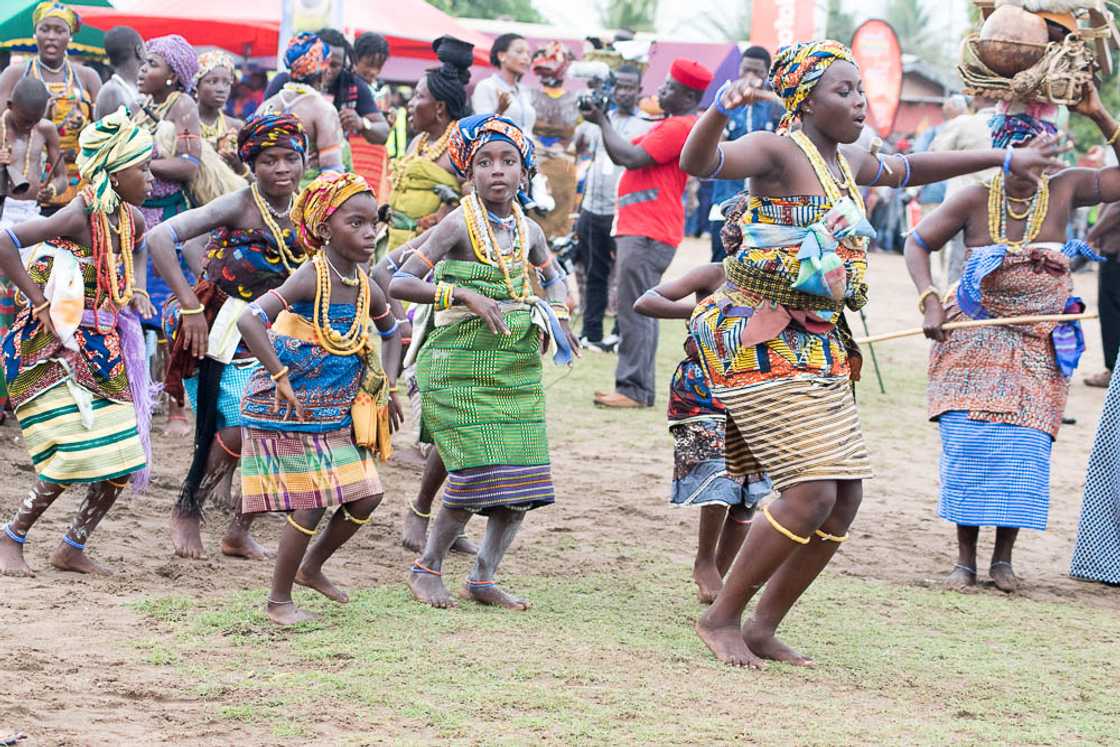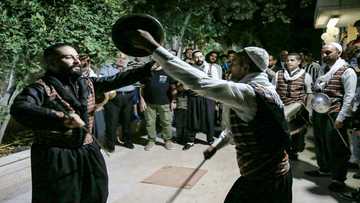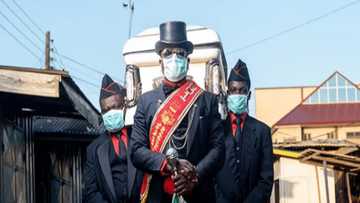Ethnic groups in Ghana and their dances, frequently seen at traditional occasions
Ghana is endowed with ethnic diversity, and each ethnic group has unique elements that make it stand out. While we expect these groups to have major differences, one common thing is that most Ghanaians love to sing and dance. It is not just the modern songs and dances that make their hearts beat fast as they jump to the rhythms; they have also stuck to traditional dances that have earned them global recognition. If you are an enthusiast of traditional cultures, you will fall in love with ethnic groups in Ghana and their dances.

Source: UGC
There is no ethnic group in Africa that does not have its dancing style because dances were useful in marking various occasions. There are more than 70 ethnic groups in Ghana, and as you might have guessed, each has its traditional dance style. The Ghana culture of dancing makes it the perfect place for choreographers seeking inspiration to develop new dance styles.
List of ethnic groups in Ghana and their dances
With over 70 ethnic groups in Ghana, one can expect even a higher number of traditional dances. Below are some of the most famous ethnic groups and dances in Ghana:
1. Akans – Adowa Dance

Source: UGC
Akan is Ghana’s largest ethnic group making up almost half of the country’s population. The people of Akan are found in Ghana and Ivory Coast and have subgroups such as Akuapem, Agona, Ashanti, Akyem, Fante, Kwahu, Bono and Wassa. All the subgroups share many cultural attributes, including the Adowa dance.
The Adowa traditional dance is performed at cultural ceremonies such as funerals, engagements and festivals and is one of the most popular traditional dances in Ghana. Through this dance, performers express their emotions and feelings with the help of their hands and feet. Each set has different hand movements based on whether the emotions are positive or negative.
2. Ewe – Agbadza Dance

Source: UGC
The Ewe tribe belongs to the Gbe ethnic group found in countries like Ghana and Togo. Other groups closely related to the Ewe are Gen, Fon, Gun, Phla Phera, Aja and Maxi. The Ewe people occupy the coastal regions of West Africa. They have several subgroups, including Anlo Ewe, Tongu and Danyi.
Agbadza originated in the war era but has evolved into a recreational dance. It was adopted from a war dance called Atrikpui. It is usually performed during the Hogbetsotso Festival. It has movements like Banyinyi, Vutsortsor, Adzo, Hatsatsa and Vutsorsor.
3. Dagbamba – Bamaya Dance

Source: UGC
Dagbamba, or the Dagombas, are a Gur ethnic group found in northern Ghana in a place called Dagbon. They speak the Dagbani language and are related to the Mossi people. They are known for their sophisticated oral tradition, especially their drums and other musical instruments.
The Bamaya dance is performed to remember a catastrophic drought that befell the people of Dagbon in the middle of the 17th century. In addition, dance is practised to express social organization and perpetuate the values that promote group solidarity.
4. Ga-Dangme – Kple Dance
The Ga-Dangme is an ethnic group in Ghana, Togo and Benin. In Ghana, they are primarily found in the Greater Accra region. However, they are believed to have originated from Lake Chad and travelled down along River Niger. There are many subgroups of the tribe, including Shai, Prampram, Osudoku and Ada.
The Kple dance is accompanied by songs that show their rich historical, cultural and religious heritage. The dance is a reminder that a theocracy ruled the Ga-Dangme. Those who dance are priestesses who communicate to gods on behalf of the tribe.
5. Fanti – Apatampa Dance
The Fanti are found in the Central and Western coastal regions of Ghana but have their origins in the Bono state. They were part of the Akans people but separated and moved to Mankessim. They are closely related to the Bono, Akyem, Akuapem and Ashanti.
The dance got its name from an incident in which a giant used to attack and kill the Fanti men at night until just one man remained. One night, when the giant attacked, a woman started dancing and distracted the giant; hence the man was spared.
6. Ga – Kpanlogo Dance

Source: UGC
The Ga people can be found on the southeast coast of Ghana. Their language is a dialect of the Kwa branch of the Niger-Congo languages. They are descendants of tribes that moved down the Niger river in the 17th century. Accra, the capital city of Ghana, is one of the six independent Ga towns.
Kpanlogo is a recreational dance popular among Ga youth in the 1960s. It was inspired by western rock and roll dance and meant to distinguish youth from the elders. It is performed with bent knees, and a bent back and accompanied by se*ually suggestive motions.
7. Gonja - Kpanaliumni

Source: UGC
The Gonja belong to the Guan ethnic group of Ghana with influences from the Dagbon, Mande, Hausa and Akan people. During the Ngbanya dynasty, the Gonja had their capital at Yagbum. The tribe has a caste stratification system of ruling, Muslim trader, animist commoner and slave classes.
Kpanaliumni is a hunters’ dance of the Gonja people. It is performed to celebrate when a hunter has killed a big animal like a buffalo, lion, leopard or roan. It is also performed by other hunters when a great hunter has died.
8. Asante – Kete Dance
The Asante or Ashanti of the Asante Region of Ghana is part of the Akan ethnic group. A majority of them speak the Twi language. They are known for the Ashanti Empire, which they founded in 1670. Its capital was Kumasi which has grown to be a city in present-day Ghana.
Kete is a royal court dance-drumming performed by the Asante people. The term also refers to a set of instruments and the music they produce. The dance is performed at funerals, weddings, and other royal palace events.
9. Krobo – Klama Dance
Krobo is the largest group of the seven Dangme ethnic groups found in Southeastern Ghana. The tribe are traditionally farmers who occupy the Accra plains, Afram Basin and Akuapem Mountains. They are divided into the Yilo and Manya. They are believed to have originated from the northeastern parts of Africa.
Klama is a traditional dance that used to be performed at festivals, including marriages and Dipo rights. Occasionally, it would be performed at funerals of high-profile individuals like priests and chiefs. Klama is a slow rhythmic dance in which the body is swayed, and the feet shuffled.
10. Nzema – Kundum Dance
The Nzema are a subgroup of the Akan people and are found in southwestern Ghana and southeast of Cote d'Ivoire. They are predominantly farmers and used to following their traditional calendar. According to the calendar, days are ordered in cycles of seven, followed by a three-week sequence.
Kundum is a ritualized dance common among the Nzema and Ahanta people. The dance is performed during the Kundum festival, celebrated to thank God for a bumper harvest. People usually dance in a circle, and it is sometimes done to expel the devil and evil spirits from the village.
Frequently asked questions
- What is the number of ethnic groups in Ghana? There are more than 70 ethnic groups in Ghana.
- How many traditional dances are in Ghana? Ghana has several traditional dances, with most ethnic groups having two or more dances.
- Which is the most famous Ghanaian dance? The Borborbor dance is probably the most famous in Ghana as it is performed on all occasions.
- What is the national dance of Ghana? The Adowa dance, originally performed by the Ashantis, is considered the national dance of Ghana.
- What are some of the Ghanaian dances? Traditional dances in Ghana include The Adowa, Bamaya, Apatampa, Borborbor and the Kple dance.
- Which is the most famous dance in the Oti region? The Borborbor dance is the most common among people of the Oti region.
- What kind of food do Ghanaians eat? The typical staple foods include cassava and plantain.
The different ethnic groups in Ghana and their dances represent a widespread culture of the African continent. Here, people can dance on all occasions, be it the birth of a child, circumcision, marriage, death or even as a leisure activity. However, this dancing culture is under threat from modernization as more and more people are abandoning their traditional ways in favour of Western cultures.
Yen.com.gh shared an interesting article about the major ethnic groups in Ghana. Ghana is the second-most populous country in West Africa after Nigeria. It is a multiethnic, multilingual, and multireligious country.
Ghana has a diverse cultural and linguistic population striving for the same goals. There are over seventy ethnic tribes spread evenly across the country. Each tribe is frequently subdivided into subgroups.
Source: YEN.com.gh









